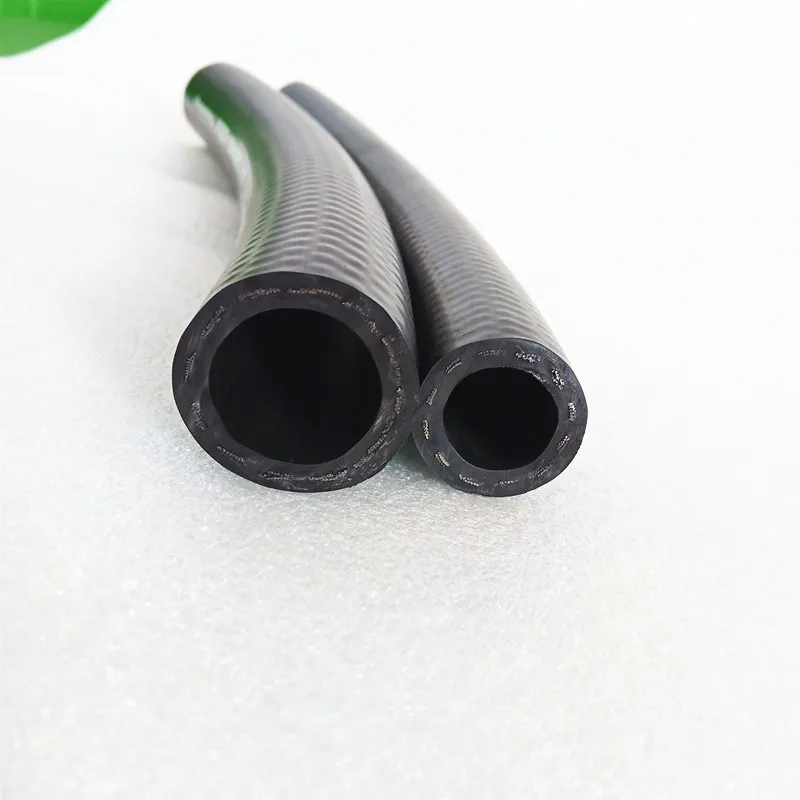335345435
Dic . 12, 2024 23:10 Back to list
rubber hose
The Art and Utility of Rubber Hose A Versatile Tool in Various Industries
Rubber hoses have been an integral part of numerous industries for decades, serving as essential conduits for fluids, gases, and other materials. Their design, functionality, and adaptability to different environments make them a staple in applications ranging from industrial manufacturing to everyday household use. This article delves into the many facets of rubber hoses, exploring their composition, applications, advantages, and maintenance.
Composition and Design
Rubber hoses are typically made from natural or synthetic rubber, often incorporating reinforcing materials like fabric or steel to enhance their durability and strength. The design of a rubber hose can vary widely, with options available in different diameters, lengths, and thicknesses. The flexibility of rubber allows for a range of configurations, including straight hoses, coiled hoses, and those with specialized fittings for enhanced connectivity.
The choice of rubber type is crucial and often depends on the intended application. For instance, neoprene and EPDM (ethylene propylene diene monomer) are popular for outdoor use due to their excellent resistance to weather and ozone. On the other hand, nitrile rubber is preferred in applications involving oil and fuel because of its superior oil resistance.
Applications Across Industries
Rubber hoses find applications in many fields
1. Agriculture In the agricultural industry, rubber hoses are pivotal for irrigation systems, allowing water to reach crops efficiently. Their flexibility makes them easy to maneuver around fields and adjust as needed.
2. Construction Construction sites often require rubber hoses for transferring concrete, delivering water for mixing, or facilitating machinery operations. They are durable enough to withstand harsh chemicals and physical wear and tear.
3. Automotive In the automotive sector, rubber hoses are used extensively in cooling systems, fuel delivery, and air conditioning lines. Their ability to handle high pressures and temperatures is critical for vehicle performance.
4. Manufacturing Manufacturing processes often involve the movement of various liquids and gases. Rubber hoses are utilized to transport these materials efficiently, including in pneumatic systems, where they convey compressed air.
5. Household In the domestic sphere, rubber hoses are commonly found in garden hoses and vacuum cleaners, demonstrating their versatility. Their lightweight nature and ease of handling make them ideal for everyday use.
rubber hose

Advantages of Rubber Hoses
Rubber hoses offer numerous advantages, making them a preferred choice in various applications
- Flexibility Their inherent flexibility allows them to bend and navigate around obstacles, making them suitable for diverse environments and applications.
- Durability High-quality rubber hoses can resist wear, abrasions, and the effects of harsh weather conditions, leading to a long service life.
- Chemical Resistance Different rubber formulations can withstand a variety of chemicals, oils, and fuels, providing reliability in industries ranging from manufacturing to automotive.
- Cost-Effectiveness Compared to other materials, rubber is often more affordable, making it an economical option for both businesses and homeowners.
Maintenance and Care
To maximize the lifespan and efficiency of rubber hoses, proper maintenance is essential. Regular inspections for signs of wear, such as cracks, leaks, or kinks, should be conducted. Hoses should be stored in cool, dry places away from direct sunlight to prevent degradation caused by UV exposure. When not in use, coiling hoses properly helps maintain their shape and prevents kinking.
Additionally, using the appropriate fittings and connectors can ensure secure connections, reducing the risk of leaks and enhancing overall safety during operation. It is also advisable to clean hoses periodically, especially those used in food or medical applications, to prevent contamination.
Conclusion
Rubber hoses are an indispensable tool across numerous industries, providing functionality, flexibility, and durability. Their ability to adapt to various needs makes them a vital asset in both commercial and residential applications. By understanding their features and ensuring proper maintenance, users can harness the full potential of rubber hoses, ensuring they serve their intended purpose effectively for many years to come.
-
SAE 100 R17 Black Smooth Cover Hydraulic Hose
NewsMar.07,2025
-
SAE 100 R17 Black Smooth Cover Hydraulic Hose
NewsMar.07,2025
-
SAE 100 R17 Black Smooth Cover Hydraulic Hose
NewsMar.07,2025
-
SAE 100 R17 Black Smooth Cover Hydraulic Hose
NewsMar.07,2025
-
SAE 100 R17 Black Smooth Cover Hydraulic Hose
NewsMar.07,2025
-
steel wire braided hydraulic hose
NewsMar.07,2025



